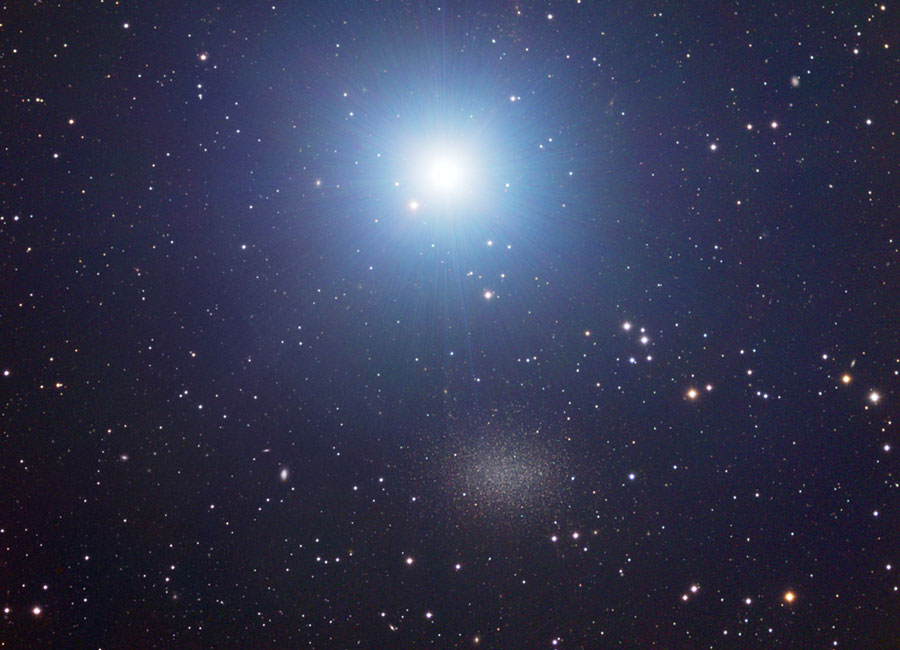Rutgers University Department of Physics and Astronomy
Stars and Star Formation
Physics 441/541 --- Spring 2012

Course Information:
This is a combined undergraduate/graduate course on the structure and
evolution of stars. The development of our understanding of stars was
one of the greatest successes of astrophysics in the 20th century
and this understanding underlies most of our knowledge of the
universe. However, some uncertainties remain. Examples are the
synthesis of the elements, the structure of rapidly rotating stars, the
evolution of interacting binary stars, and the formation of the first
stars in the universe. This course begins with the properties of stars
and how these are determined. It will then cover topics in stellar
structure and evolution. Junior-level courses in
atomic physics and electromagnetism are prerequisites for this course.
Professor: Tad Pryor,
302W Physics & Astronomy Bldg, 732-445-5500 x5462,
pryor 'at' physics.rutgers.edu
Time: TF 12:00 - 1:20 PM
Location: ARC 203, Busch Campus
Office Hour: Thursday 3:00 - 4:30 PM. Alternatively, call or
email for an appointment.
Text: The Physics of Stars, 2nd edition by A. C. Phillips, Cambridge University Press
Image: The bright star Regulus and the Leo I dwarf galaxy,
courtesy of the Astronomy Picture of the
Day. Regulus is a nearby (24.3+-0.2 pc), naked-eye (V=1.39),
main-sequence (B8 IV) star whose location only one third of a degree
from Leo I in the sky considerably complicates observations of the
faint stars in that galaxy (the brightest have V=19.5), which is a
satellite of our own Milky Way Galaxy. Regulus ia rotating so rapidly
that it is significantly flattened and part of a multiple star system.
Radial velocity variations show that it is orbited by a white dwarf
(only discovered in 2008!) and the reddish star to the lower left of it
in the image is gravitationally bound to Regulus since it has the same
mean radial velocity and proper motion. The reddish star is itself a
binary (K2V + M4V). Leo I is an example of a low-luminosity (M_V =
-11.9) dwarf spheroidal galaxy. Its distance of 250 kpc makes it one
of the most distant satellites of the Milky Way and there is
controversy over whether it is actually bound to our Galaxy. It has an
extended star formation history, with the rate of star formation
peaking about 3 Gyrs ago. There is no star formation in the galaxy
today.
Syllabus
Class Calendar
The calendar gives an approximate schedule for the lectures and reading.
Current Course News
The final exam will be held in ARC 203 (the classroom) on Thursday,
May 3, from 1:30 - 3:00 PM. It will be closed book and
notes, but you can bring one sheet of notes. Bring a calculator, but I will
supply any physical constants that you need. The test will cover chapters 3.2,
3.3, 4 and 5 of Phillips and homeworks 6-9. I will not explicitly ask
questions about material from before the midterm, but you cannot completely
forget that material either.
Homework
- Homework #1, due: Friday, February 3
- Homework #2, due: Friday, February 10
- Homework #3, due: Friday, February 17
- Homework #4, due: Friday, February 24
- Homework #5, due: Friday, March 2
- Homework #6, due Friday, March 30
- Homework #7, due Friday, April 6
- Homework #8, due Friday, April 13
- Homework #9, due Friday, April 27
Lecture Slides
Please send any comments on this page to
pryor 'at' physics.rutgers.edu.
Revised May 1, 2012
